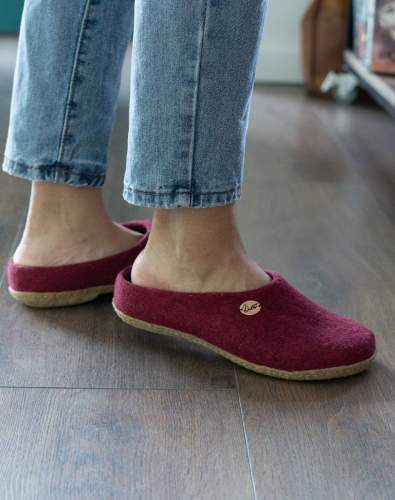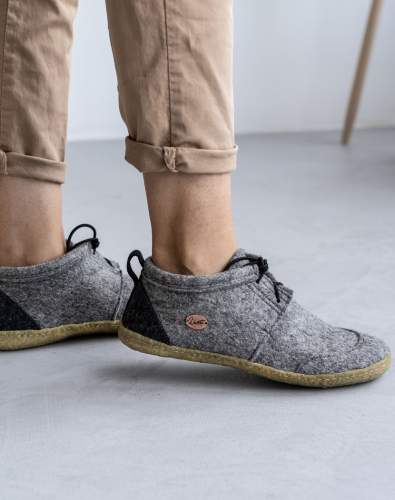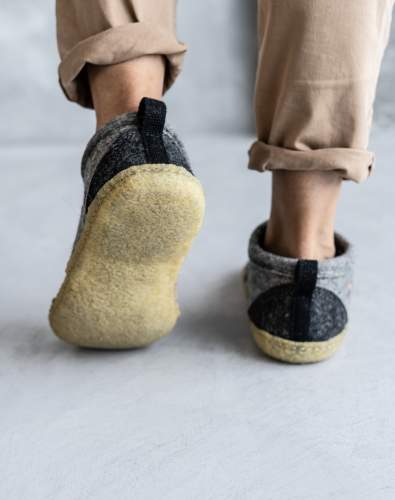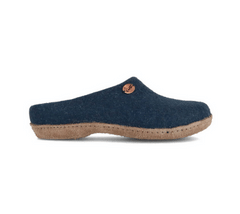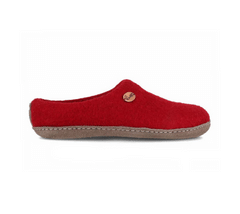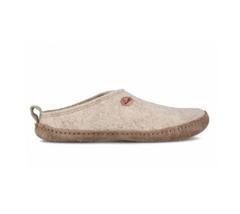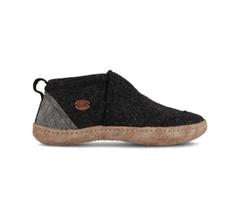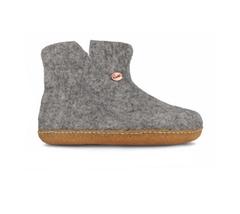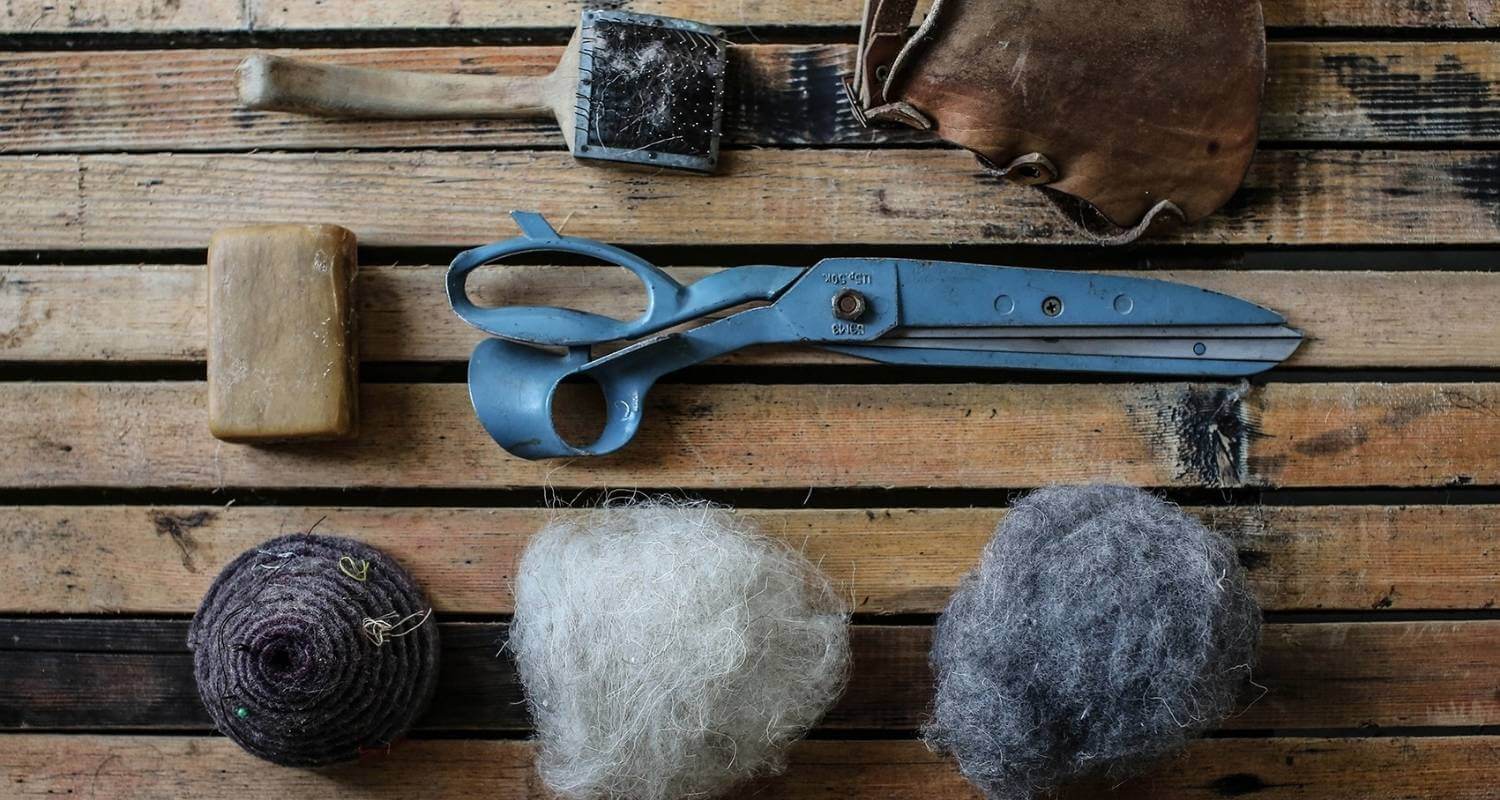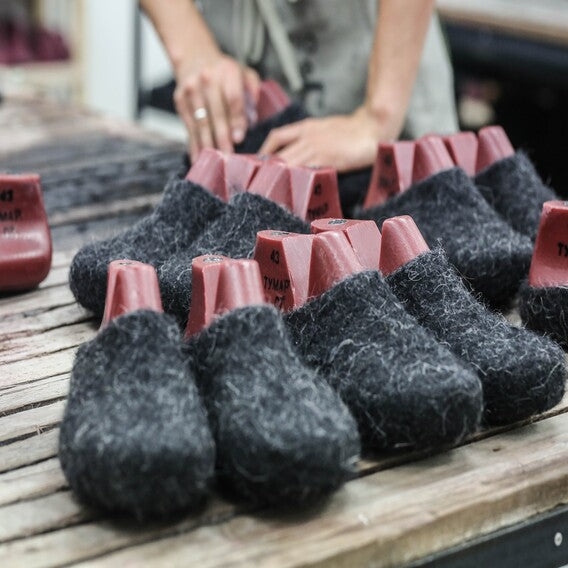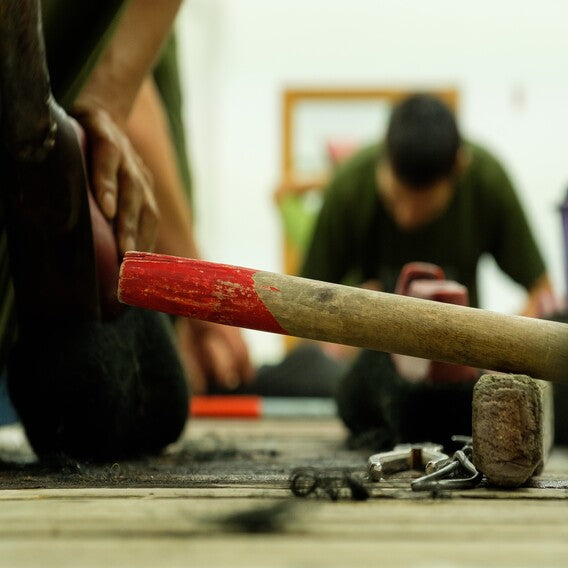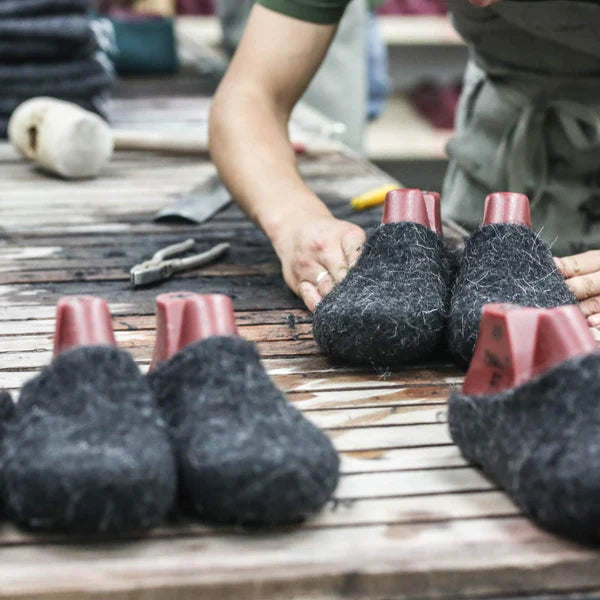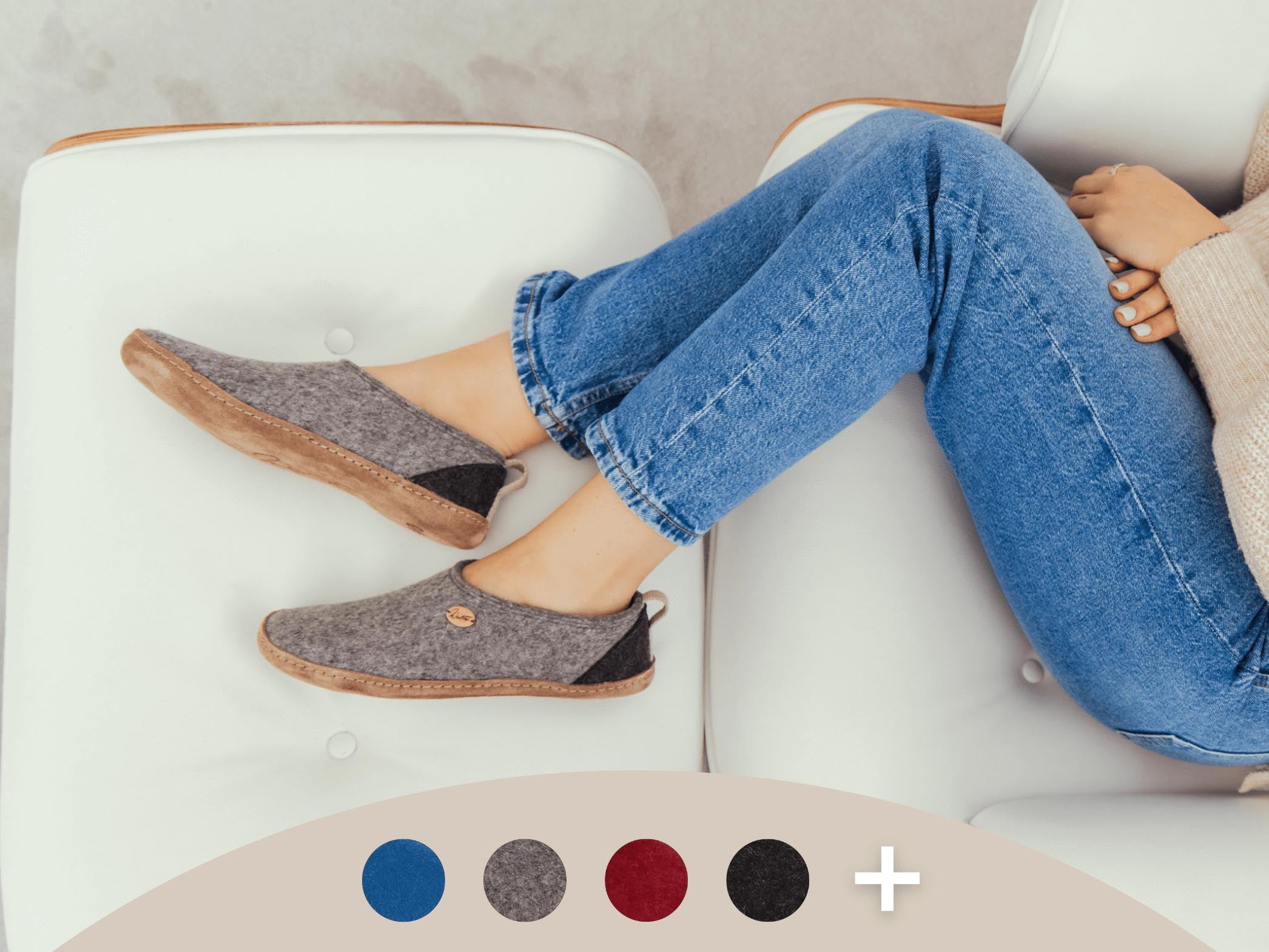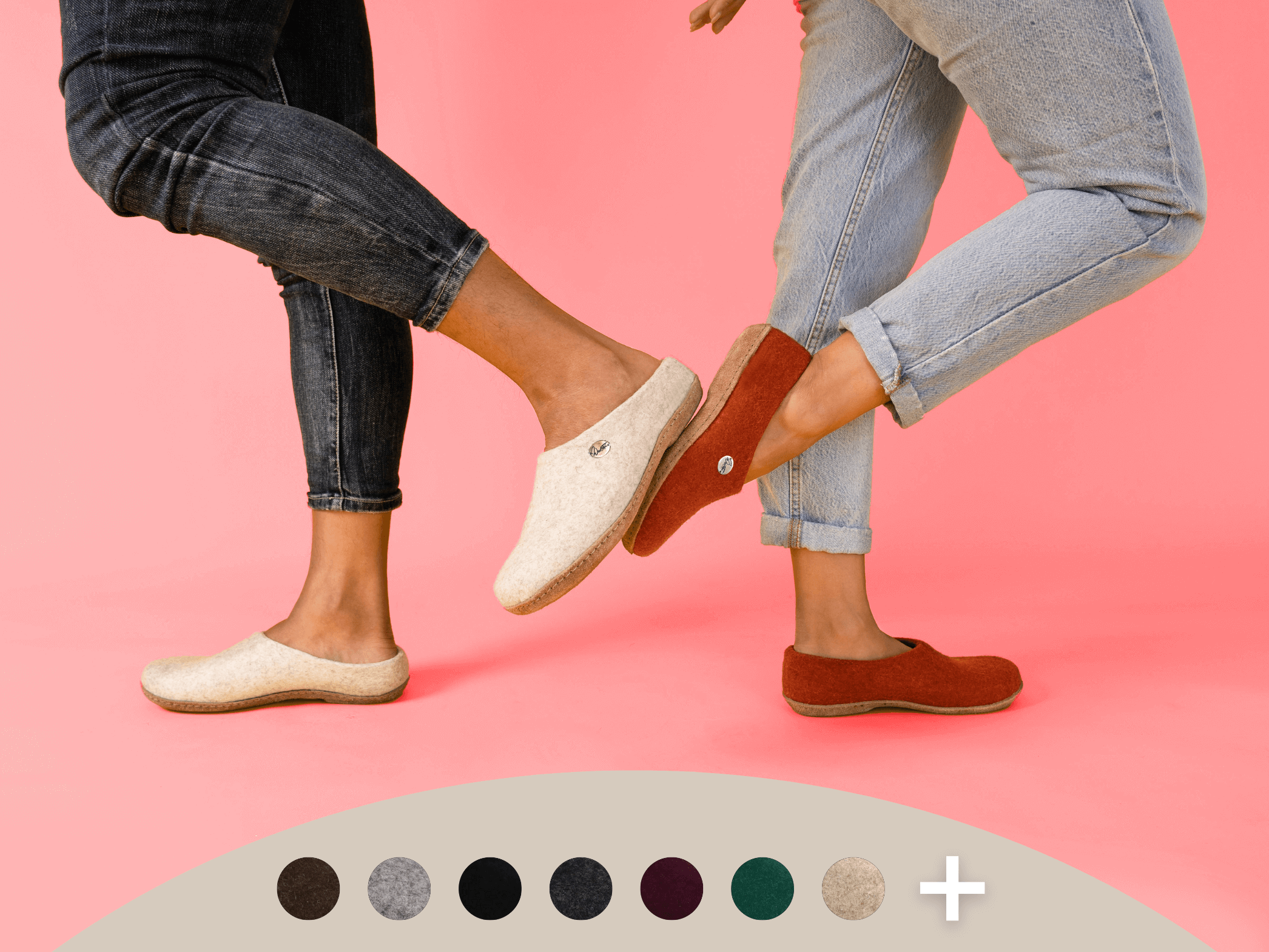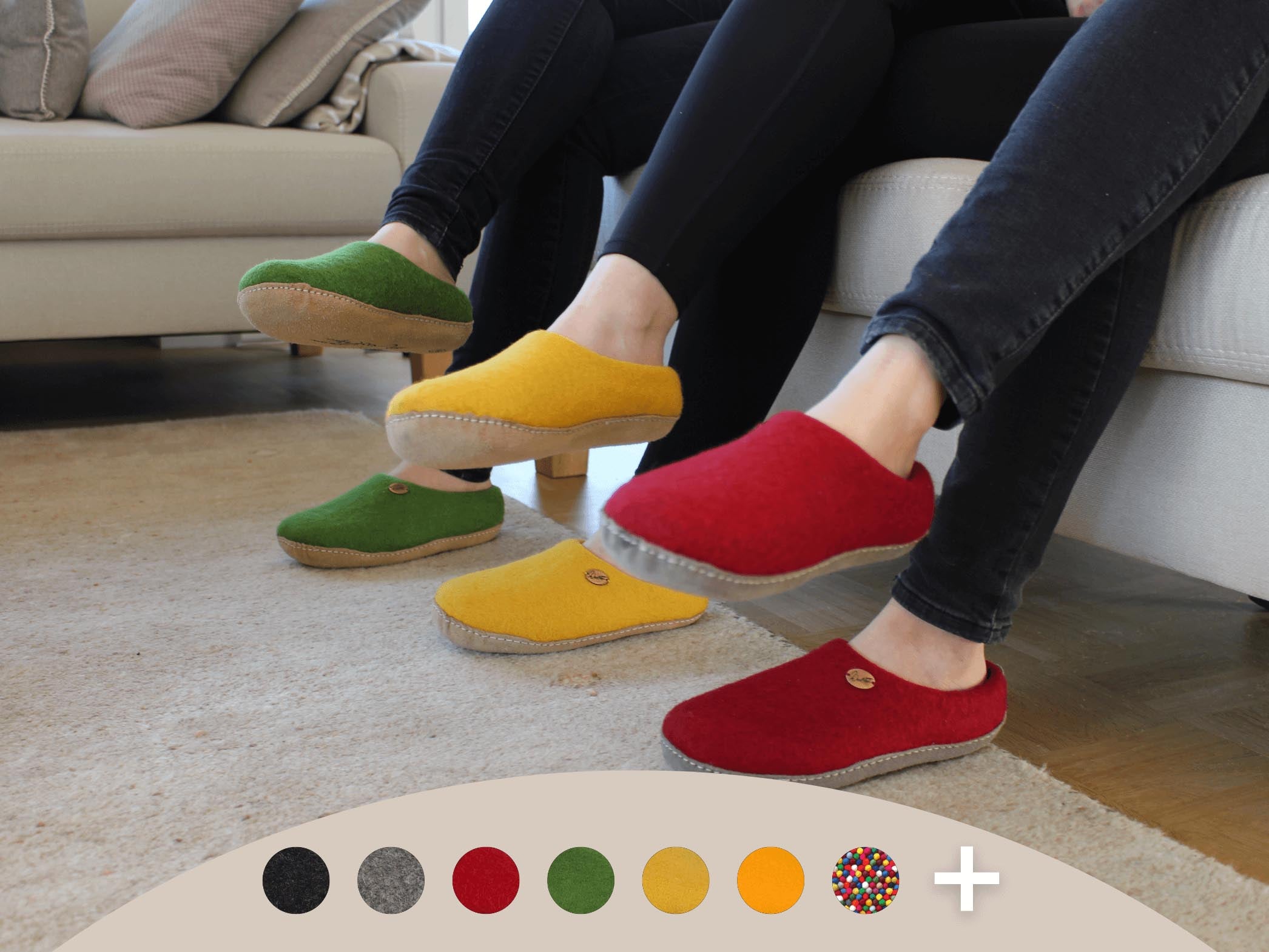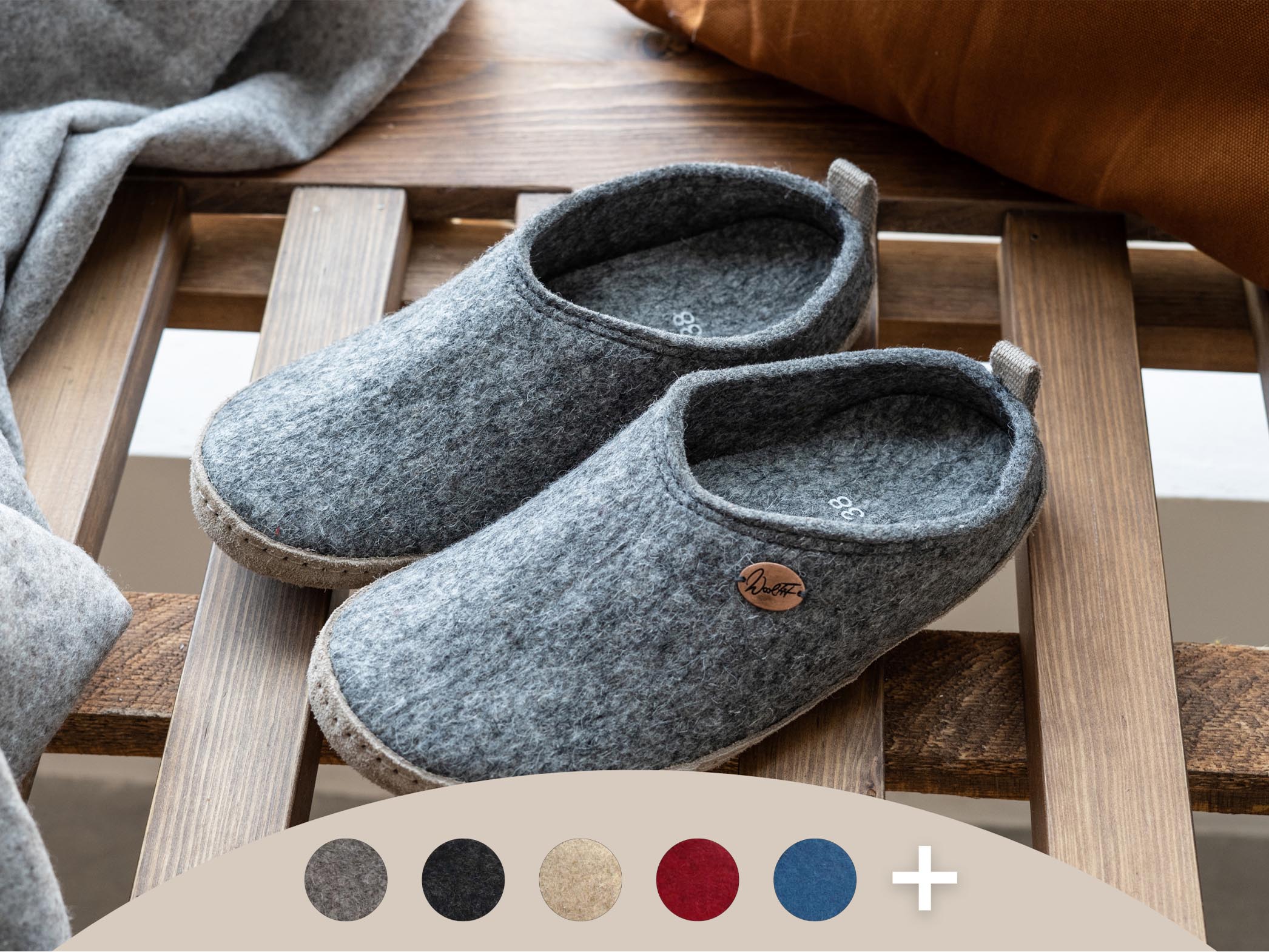WoolFit Slippers Craftsmanship
Each of our pairs of WoolFit slippers involves more than 6 hours of handcraftsmanship and centuries-old techniques. We would like to invite you on a journey through the traditional felting process, that remained the same in principle for thousands of years: Water, wool and a set of hands, crafting the wool into felt to use for tents, saddles, clothing and so much more.
We're convinced that wool is the best material for slippers and have been for over 25 years. It's properties are uniquely suited to be used as footwear: Breathable, soft, great insulation, durable, odor-resistant - the full package.
Come and join us on a journey to find out how WoolFits are made.
Every WoolFit Slipper
Starts with 100% natural wool
(Hands down the best material for slippers. Why? Find out here)
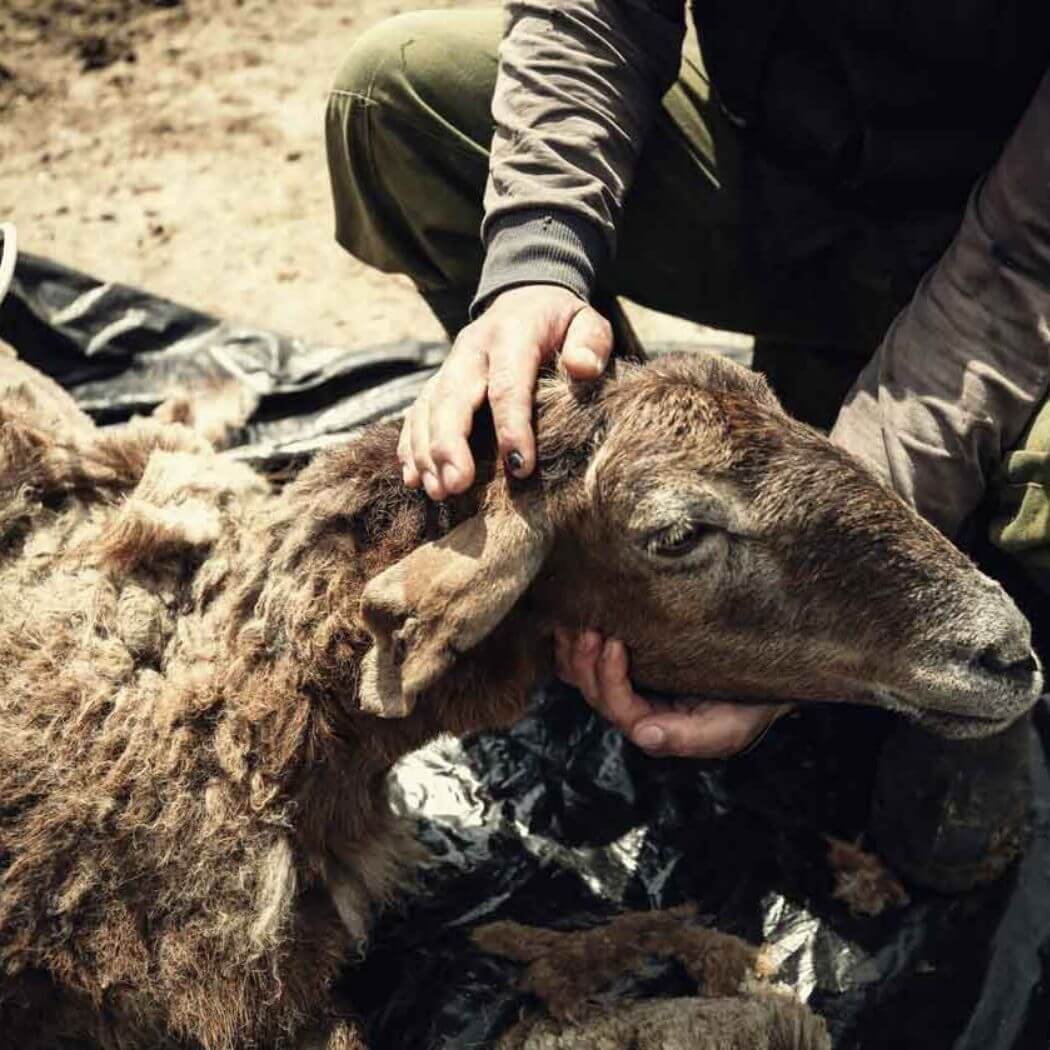
It all starts with the sheep...
Once a sheep needs a new haircut, the journey of our slippers begins. The wool for some styles comes from local shepherds in Kyrgyzstan, at the foot of the Himalayan mountains. The sheep are still raised there in a traditional and resource-friendly way. In addition, the wool is wonderfully soft, breathable, and has proven to be an effective insulator against the cold winter. The wool we use in our Nepalese manufacturing comes from New Zealand and is of course mulesing-free.
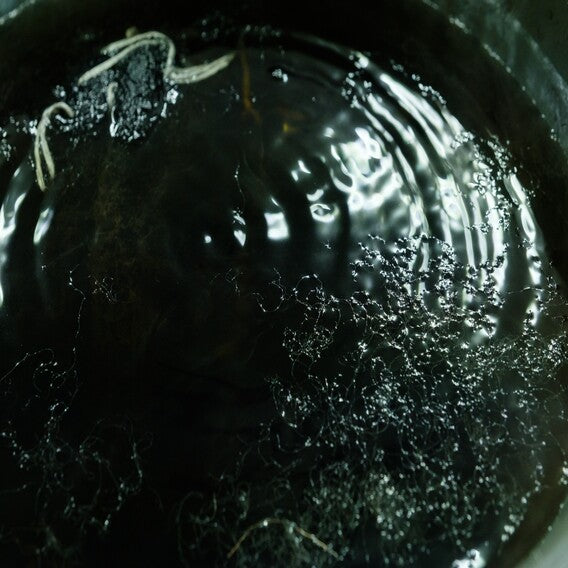
...then cleaning the wool...
At this point, the wool is very coarse and dirty. Let's clean it! The process involves washing in hot water to loosen any dust or greasy matter. Washing helps to clean away any impurities that are left over from the shearing and sorting process. Today, most shearers will wash the entire fleece, but there was a time when scouring was done by hand with a brush. This was a lengthy process, and many times, extra care was required to ensure that the sheep were not harmed during the washing process.
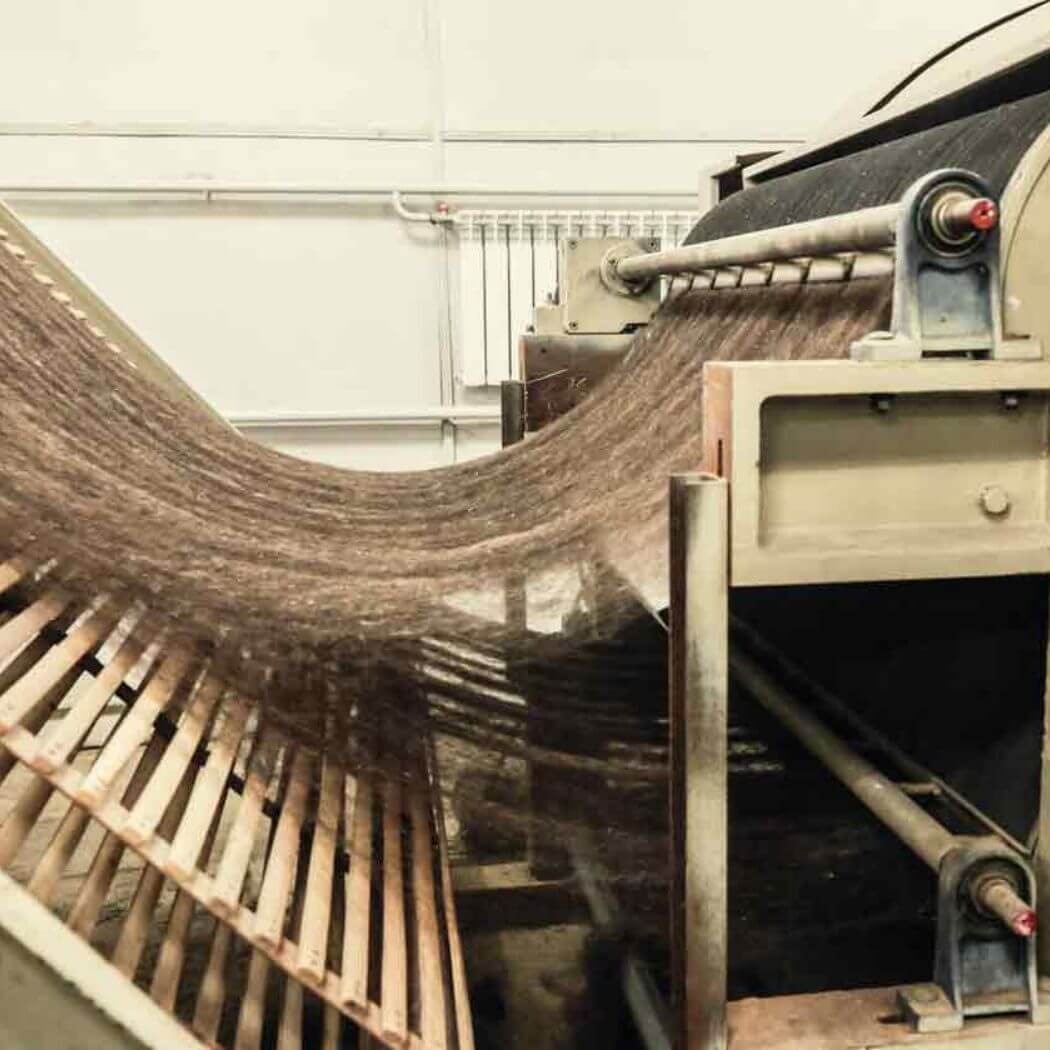
...and untangling the wool fibers
When you think of wool, you probably picture it as being a single fiber strand. But what if I told you that the wool that we use in our yarns is actually a combination of more than 200 extensible fibers? After the wool is cleaned and picked, it's time to untangle it. Untangling or carding, as it is also known, loosens the fibers and prepares the clean wool for spinning. The careful and precise process of removing loose fibers through carding helps in creating a strong, fine felt.
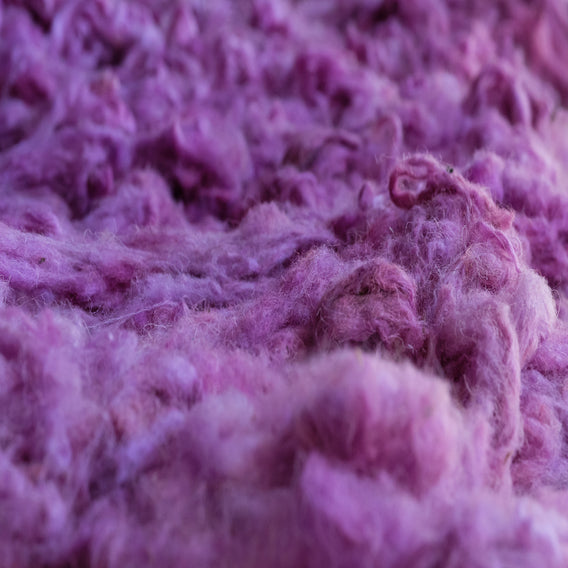
LET'S MAKE IT VIBRANT!
To Dye or not to Dye
Once the wool is untangled it is ready to be naturally dyed. The dyeing process is where wool fibers begin to transform from their natural state to a more colorful one.
This is a kind of chemical process where the wool is treated with multi-component substances until that perfect shade comes out. Fibers are dyed using special procedures in order to ensure that the color is locked into the wool.
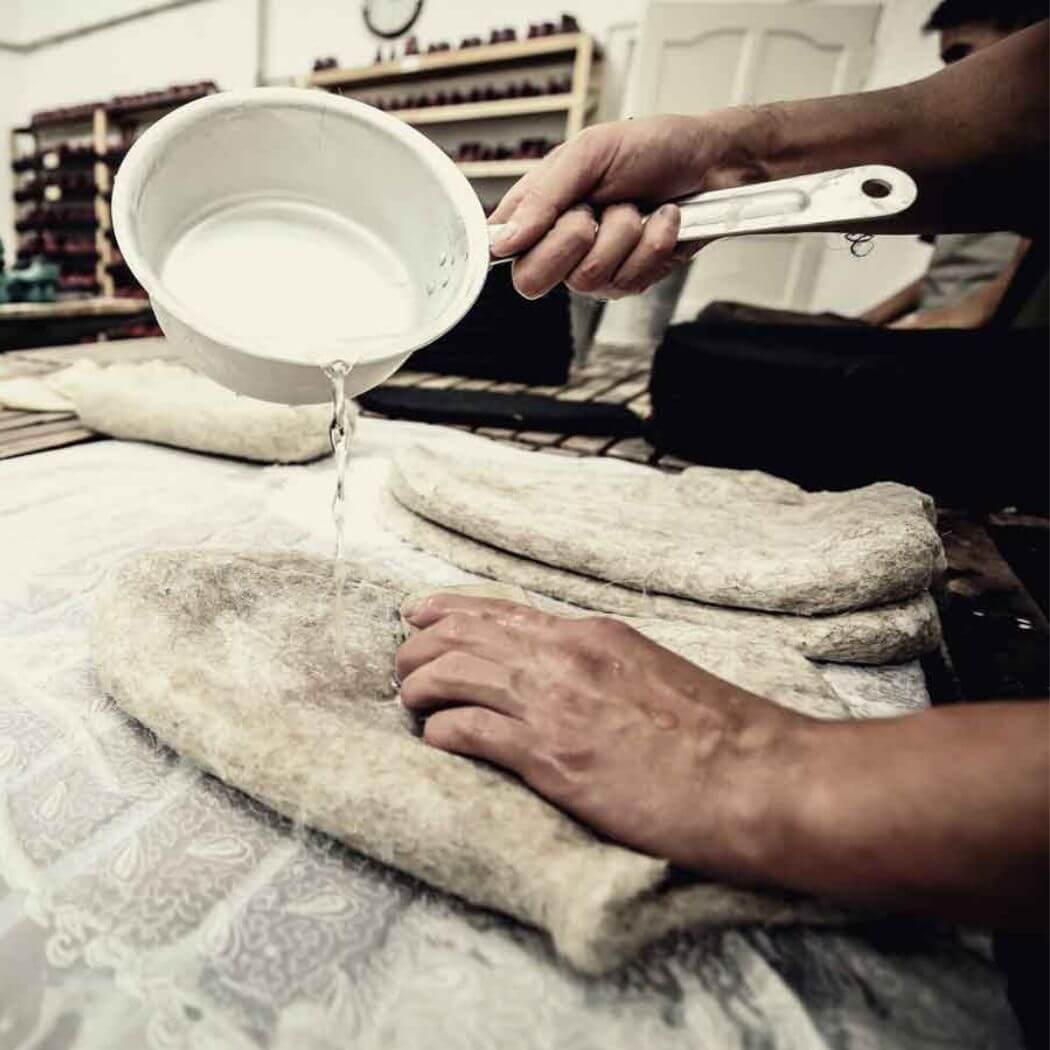
Felting a sock, rolling, rubbing
Yes, you read that right. Our seamless felted slippers begin their WoolFit existence in sock form. Layer by layer, the cleaned and combed wool fleece is wrapped around a last and shaped into the desired form with warm soapy water. The thicker the layer becomes, the firmer the felting can be. The pressure is gradually increased. This is the most labor-intensive part. Now comes the strenuous part. In the wet felting process, the dyed wool fibers are added to hot water and agitated. The fibers are kneaded and manipulated until the mixture interlocks in an unordered way to form felt. By rolling the fibers around other objects, like in making shoes, their shape and size can be controlled. ach felted sock is subjected to friction with considerable force for hours on end. With the help of the soapy water, the individual wool fibers interlock and solidify the felt.
Wet felting
Traditional, by Hand
Felting is the act of matting and forming fibers until they are interlocked and matted together. A skilled craftsman using the traditional wet felting method can make a pair of felt shoes that will last. The traditional wet felting method requires skill and craftsmanship but results in seamless and durable felt shoes.
WoolFit Impressions
From our Nepal Production
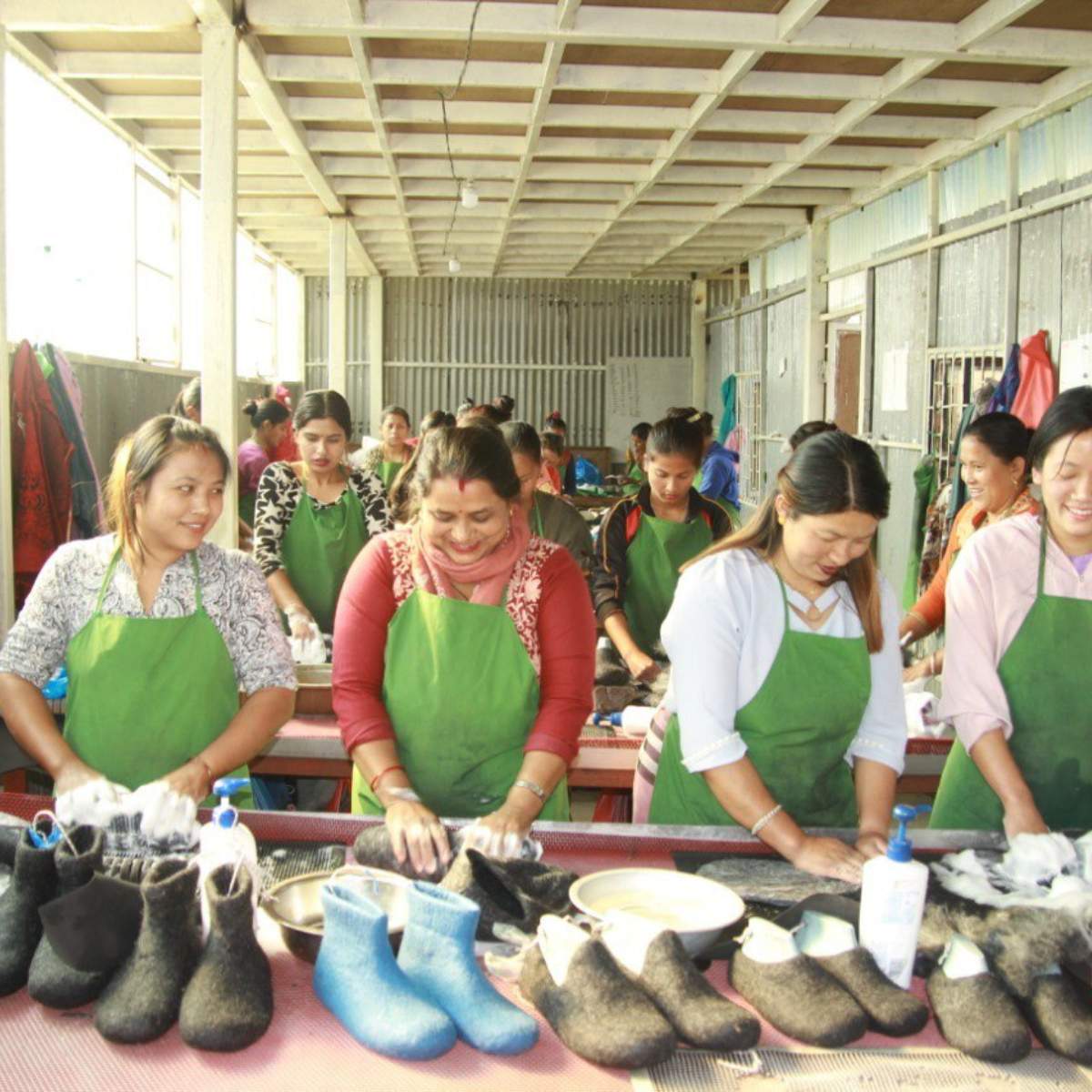
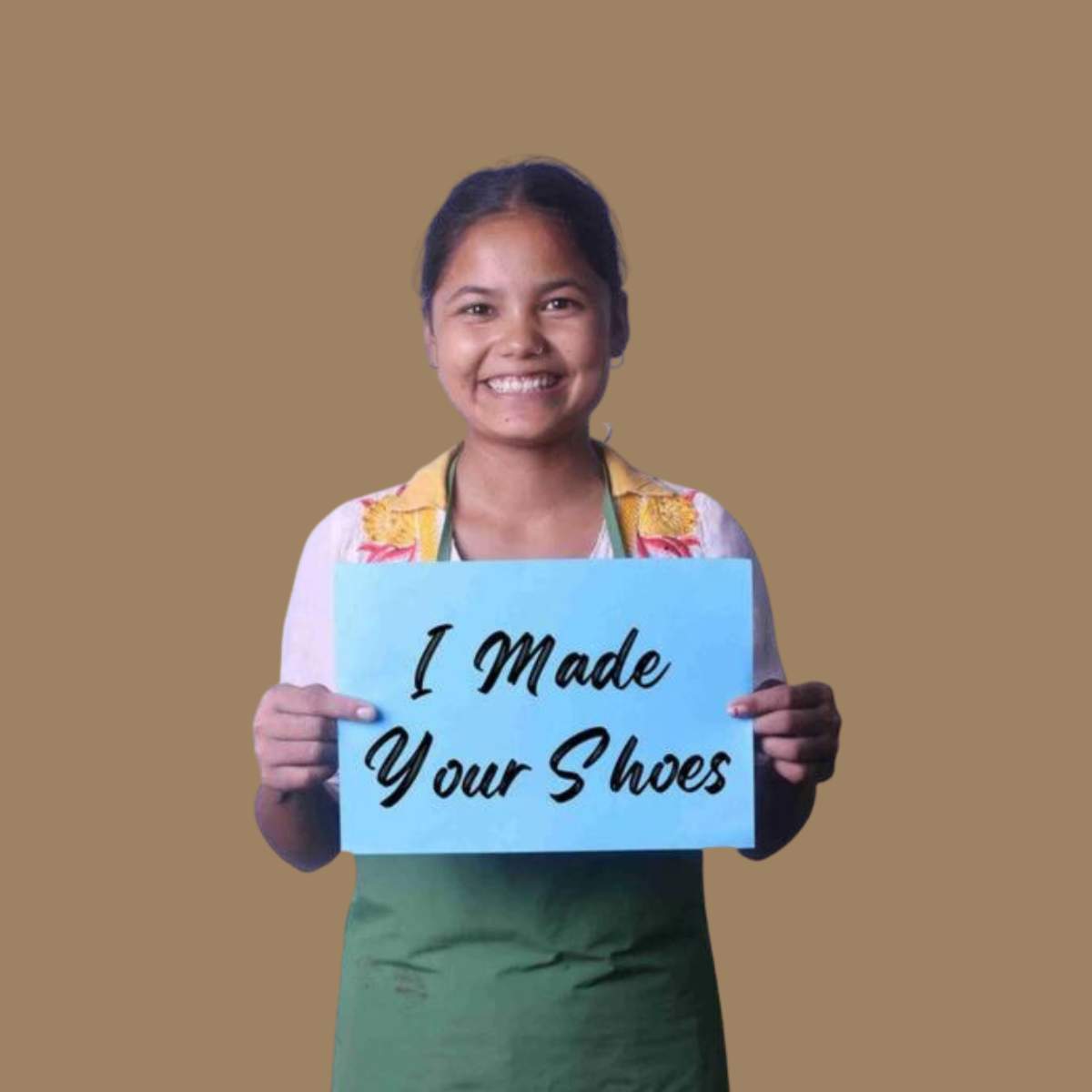
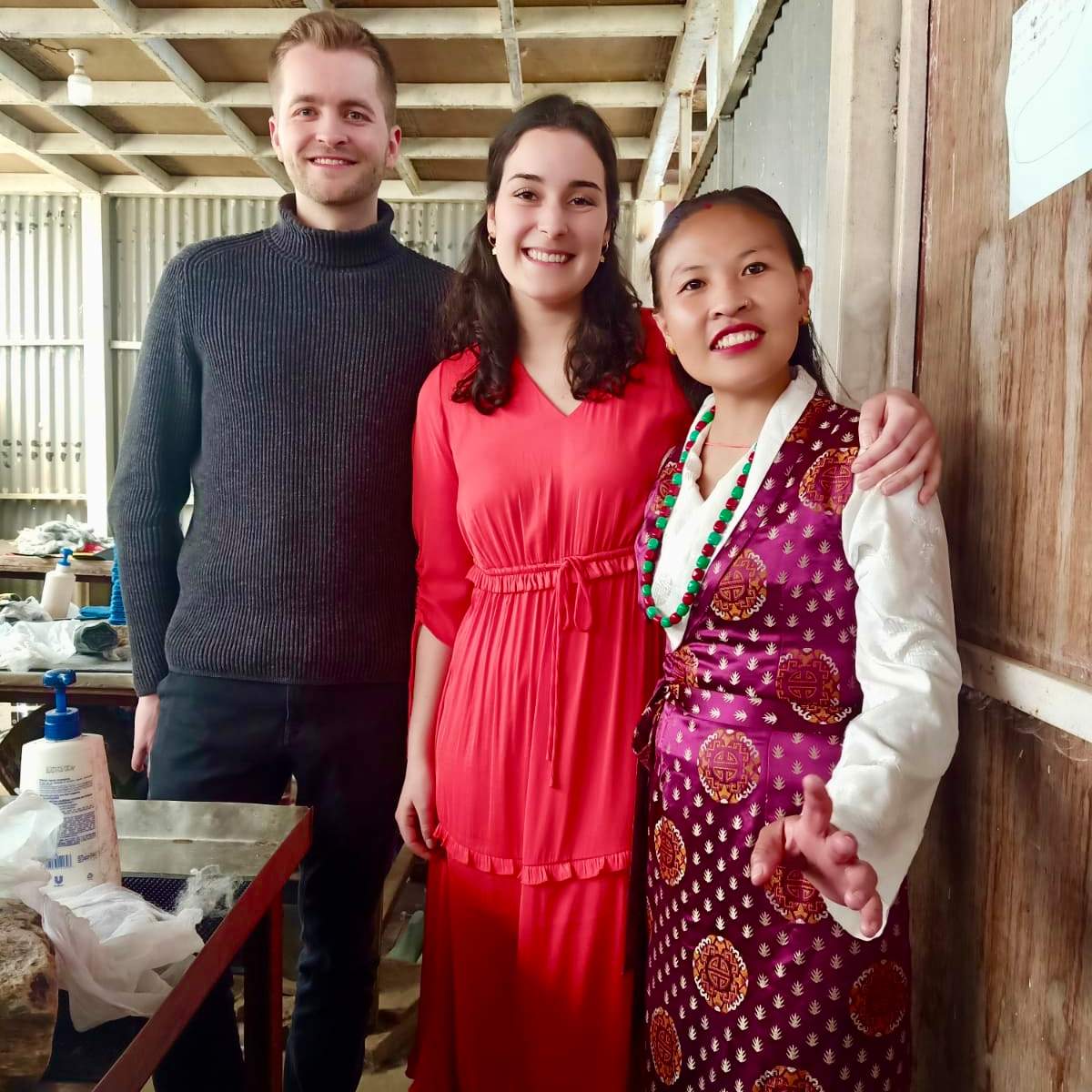
Impressions from
Team WoolFit Kyrgyzstan
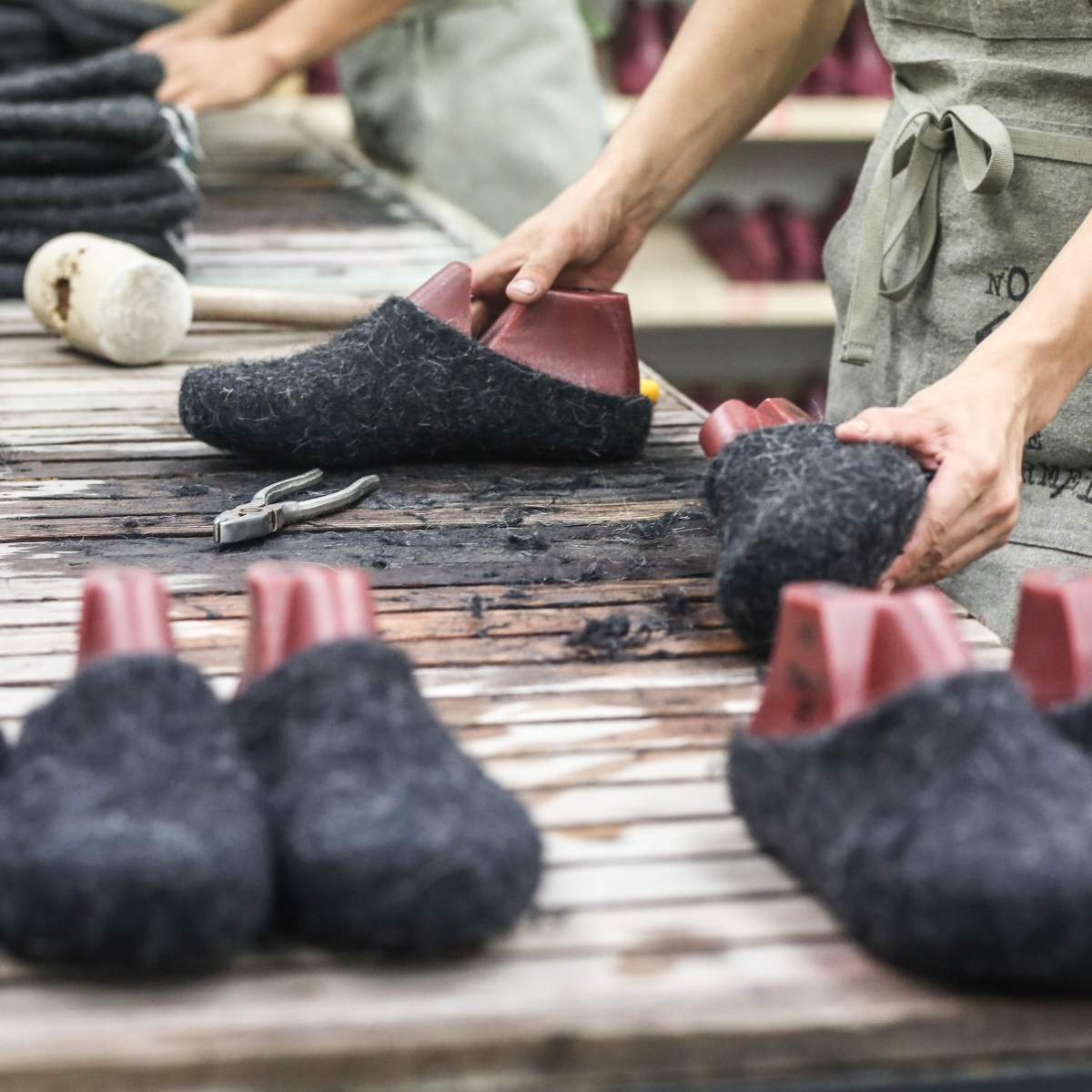
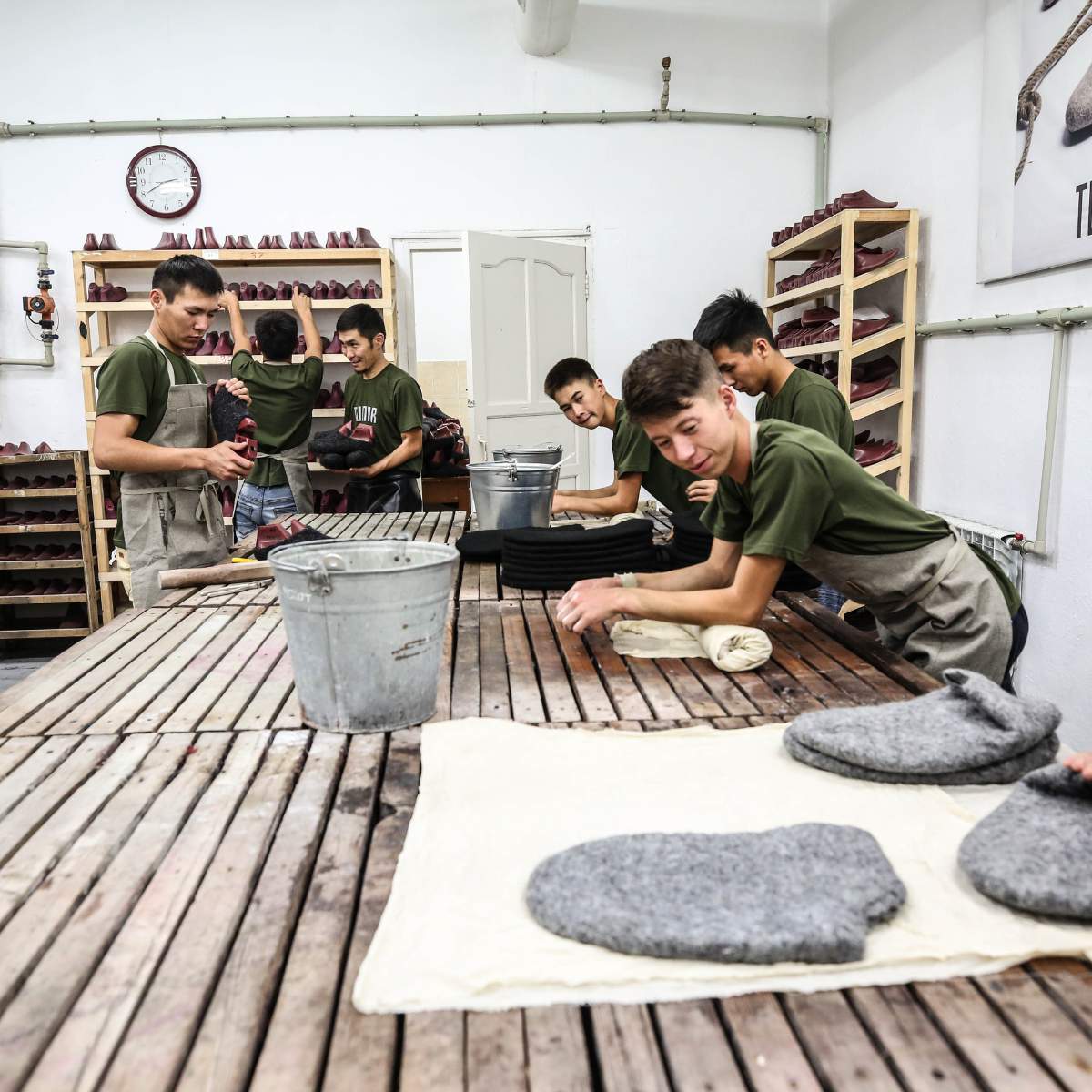
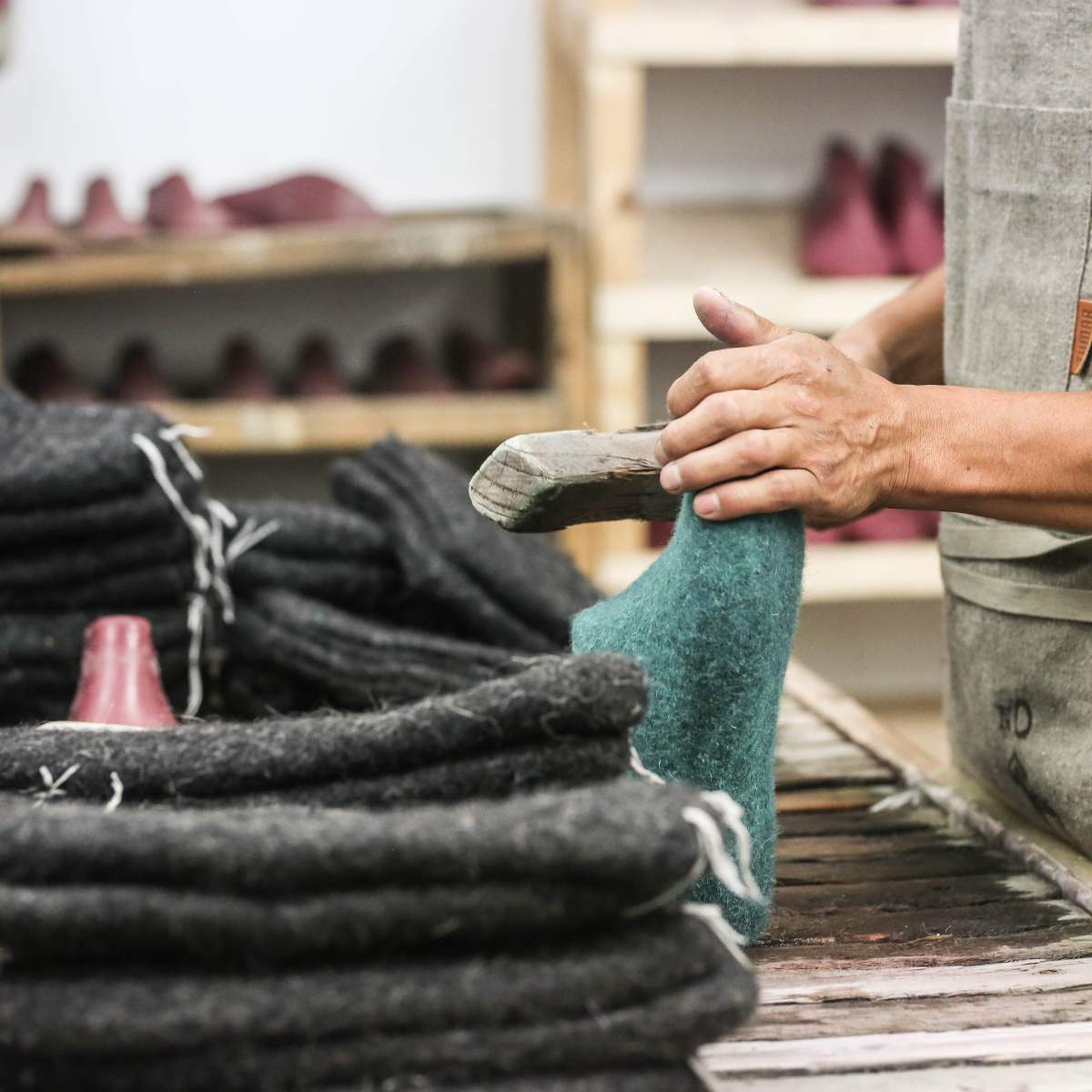
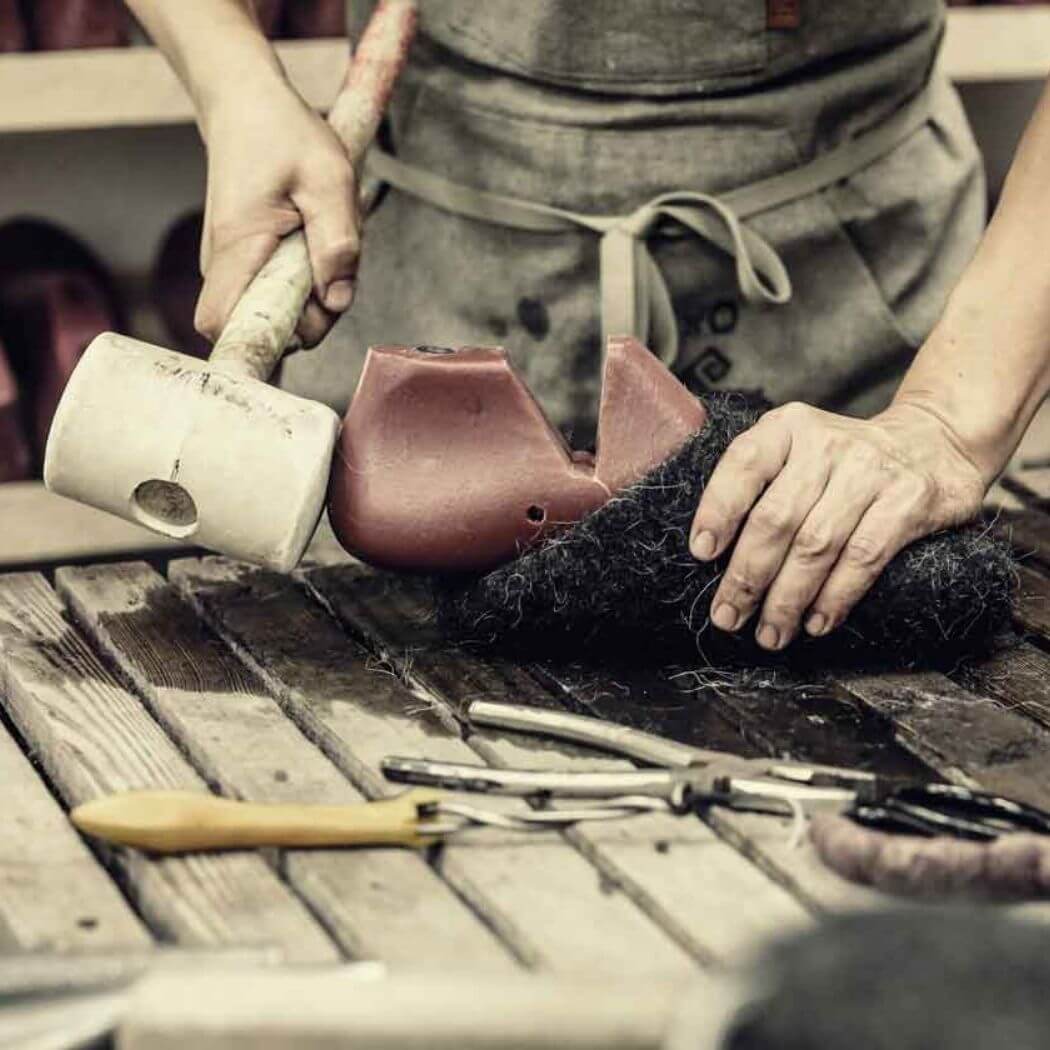
The blocking process
This is how the shoe gets its shape.
We use a specially designed, anatomically pre-formed last with a particularly foot-friendly shape.
In the picture, you can see how a WoolFit Classic slipper is being blocked. The felt is cut for the first time according to the desired shape.
Drying & Shaving
In the production of felt shoes, drying plays an important role in tightening and preserving the shape. This is often done by placing them on shoe molds to maintain their intended shape. When it's wet and freshly dyed, the felt can shrink and alter its shape pretty drastically. You don't want to waste your time having to fix a shoe that was ruined during this step.
Shedding and pilling are common occurrences in shoe manufacturing. Shedding refers to the fluff that gathers on your socks as you walk, and pilling refers to the fibers forming clumps on your clothing, producing an unattractive effect. After being brushed and rolled, shaving removes any excess fibers. This step gives the shoes a smoother finish and removes excess fibers that may contribute to shedding or pilling.
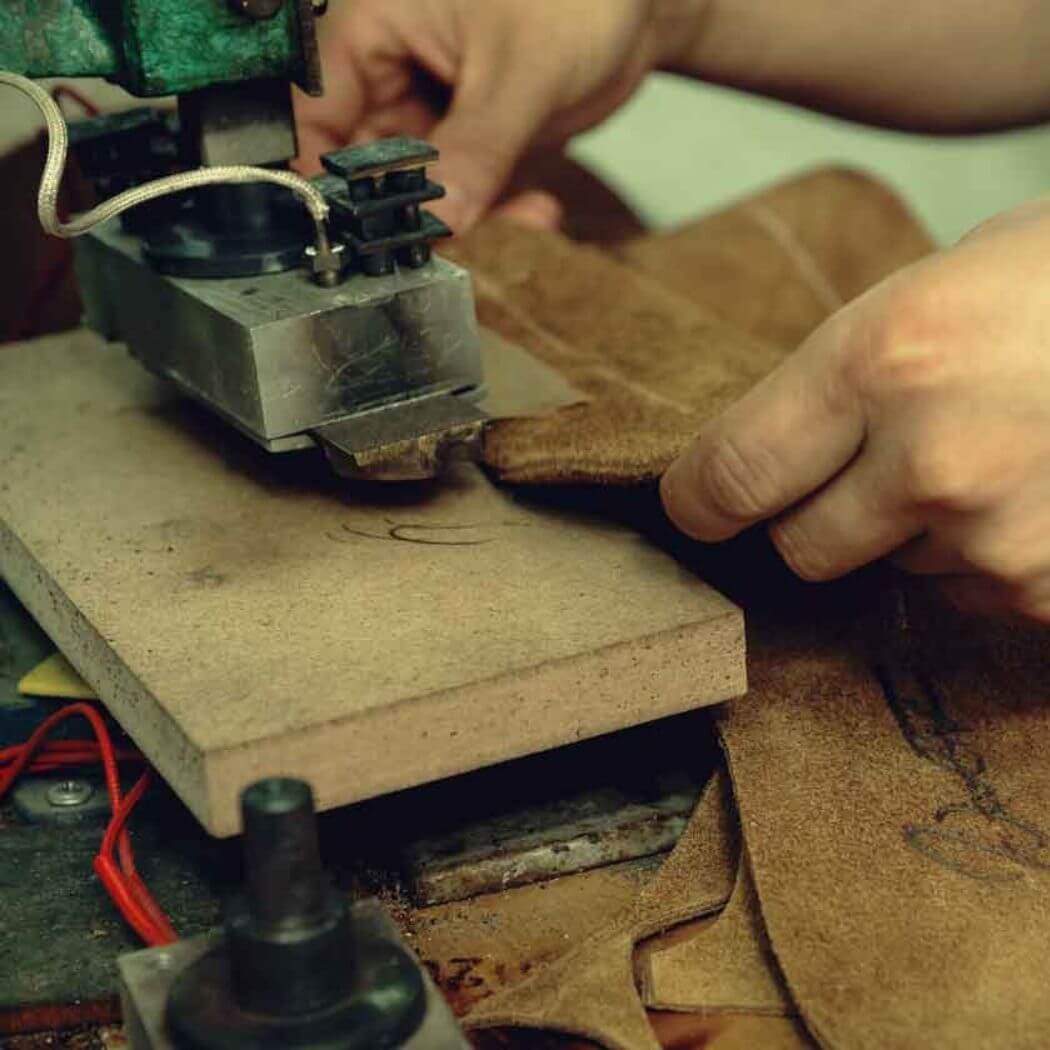
Cutting the sole
We have chosen a vegetable-tanned leather sole, which is sustainably produced without the use of chemicals as a by-product of the meat industry.
This noble material is not only more environmentally friendly, but also provides good grip on all surfaces and simply feels especially cozy.
Here you can see the sole being cut to size to fit perfectly to the bottom of the WoolFit slipper."
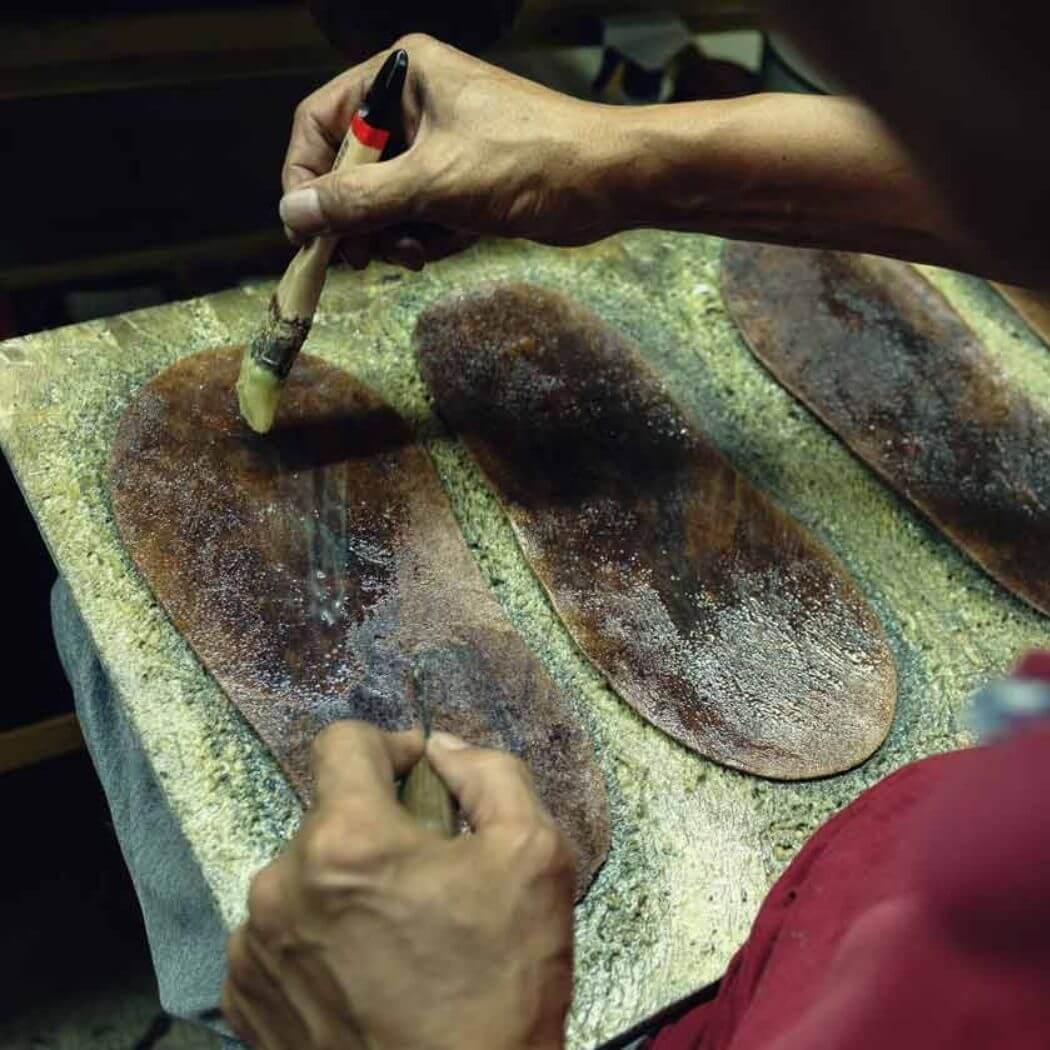
The Gluing of the Sole
The soles are brushed with glue by hand. We rely on the additional fixation of the sole by adhesive. Many manufacturers sew or glue the soles.
Our method provides significantly more safety and durability. The glue has a lot of power and ensures long-lasting durability.
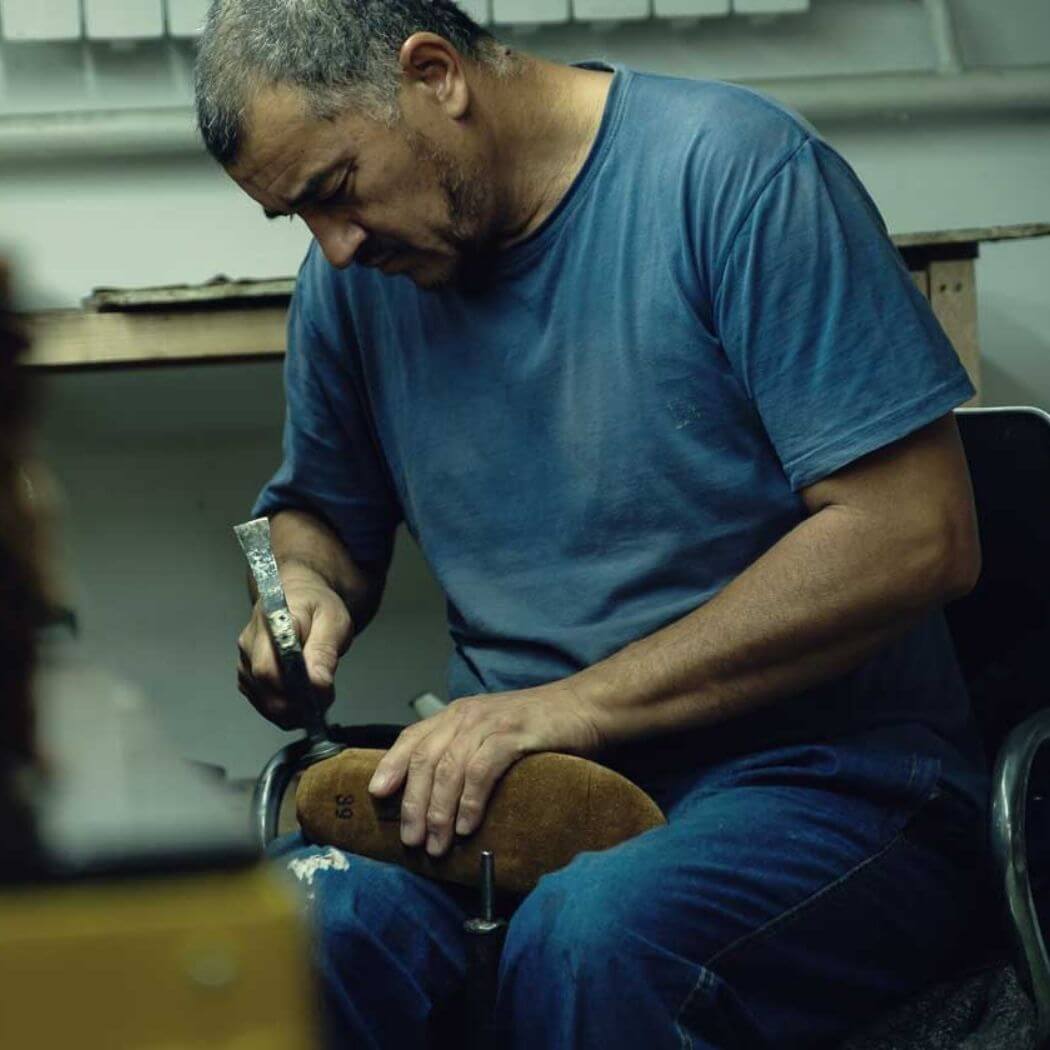
Attaching the Sole
The shoe is carefully attached with the sole to avoid any wrinkles or air bubbles.
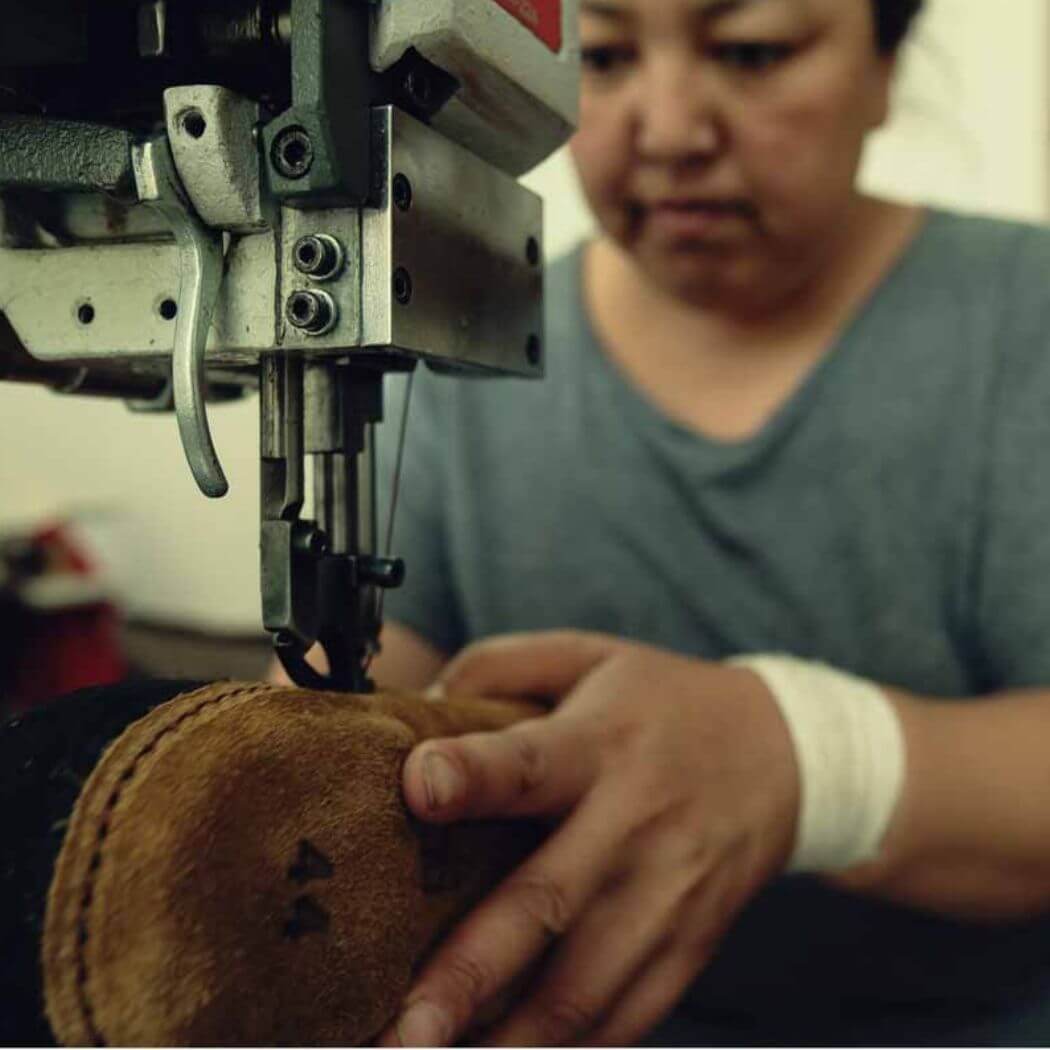
Double protection
Compared to other slipper manufacturers, we go the extra mile and also stitch the sole to the shoe.
In case the glue or stitching gives way, the sole will still be securely attached.
Finally, the shoes are shaved with a razor to make them smoother and more beautiful.
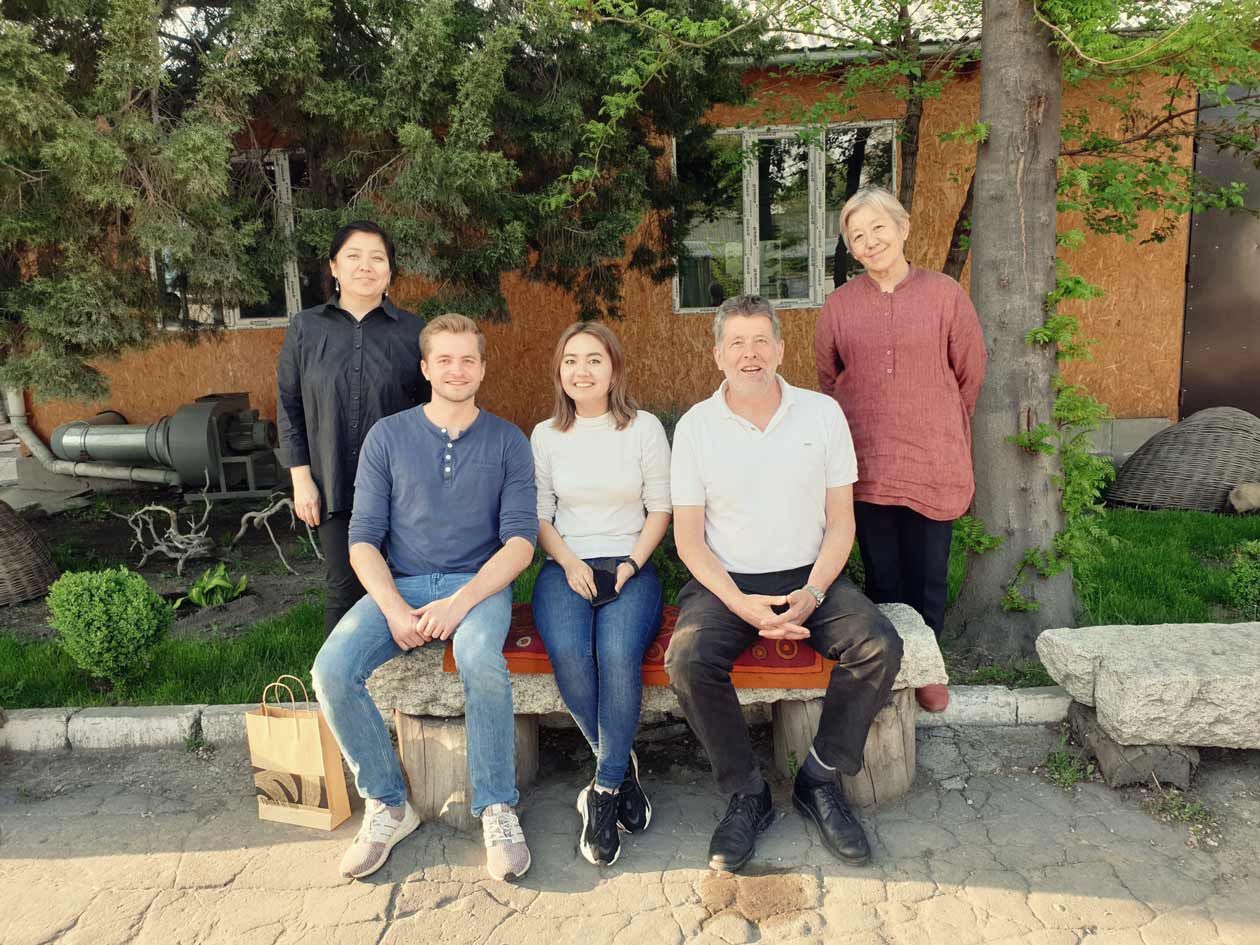
Finished is the WoolFit
Now it just has to find its way to theUSA.
In this picture, you can see the production managers in Kyrgyzstan, two true masters of felting, with whom we have developed our WoolFits.
Our translator Ekaterina (in the middle) ensures that no misunderstandings arise during the process.
Thank you
We are truly proud to have created a product that brings joy to the feet and hearts of our customers. We are convinced that wool is the best material for slippers. Therefore, we have deliberately chosen small manufacturing companies and art collectives as our partners, who are committed to developing unique products with us. We would be delighted if you would join us on this journey and tell others about us.

